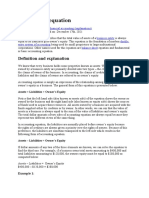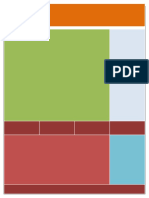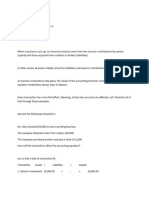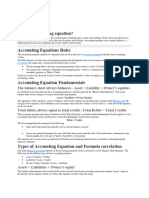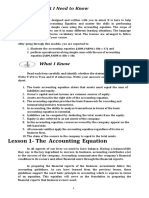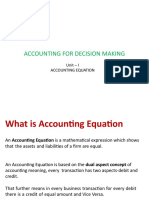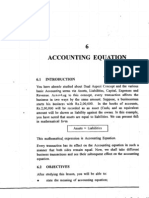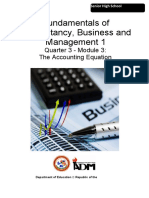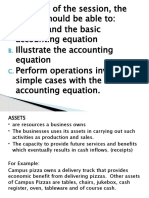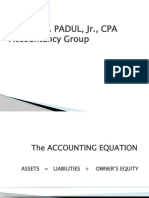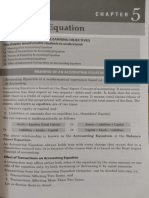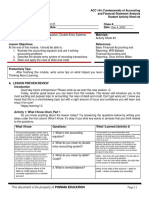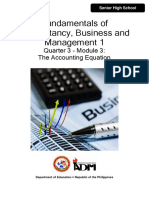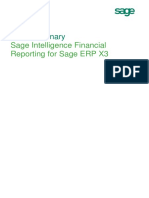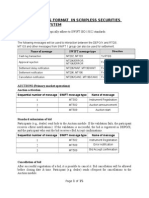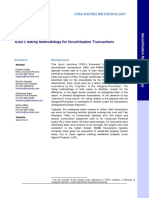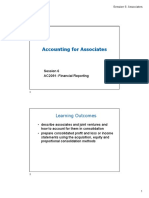0% found this document useful (0 votes)
28 views21 pagesAccounting Equation BasicProblemUnderstanding
The accounting equation states that a business's total assets equal its liabilities plus owner's equity, forming the basis of double-entry accounting. It illustrates the relationship between assets, liabilities, and owner's equity, ensuring that the equation remains balanced after every transaction. Various examples demonstrate how different transactions impact the accounting equation while maintaining this balance.
Uploaded by
SnehasisCopyright
© © All Rights Reserved
We take content rights seriously. If you suspect this is your content, claim it here.
Available Formats
Download as PDF, TXT or read online on Scribd
0% found this document useful (0 votes)
28 views21 pagesAccounting Equation BasicProblemUnderstanding
The accounting equation states that a business's total assets equal its liabilities plus owner's equity, forming the basis of double-entry accounting. It illustrates the relationship between assets, liabilities, and owner's equity, ensuring that the equation remains balanced after every transaction. Various examples demonstrate how different transactions impact the accounting equation while maintaining this balance.
Uploaded by
SnehasisCopyright
© © All Rights Reserved
We take content rights seriously. If you suspect this is your content, claim it here.
Available Formats
Download as PDF, TXT or read online on Scribd
/ 21
